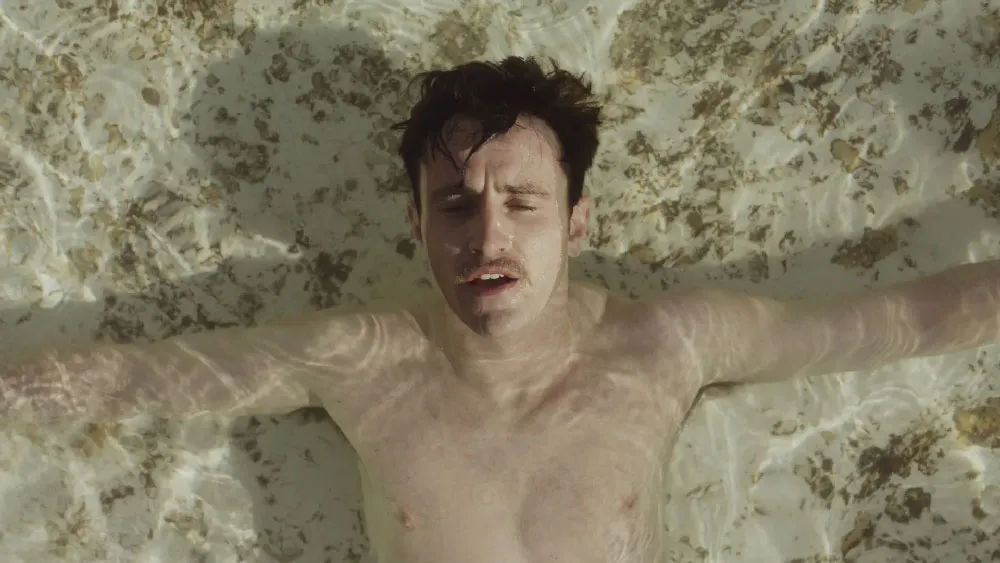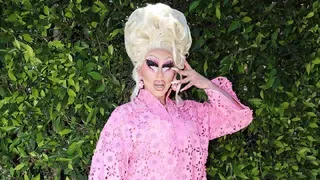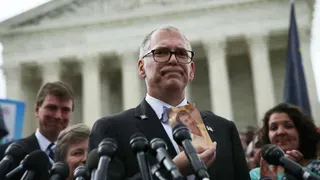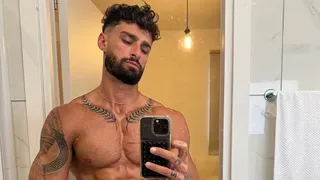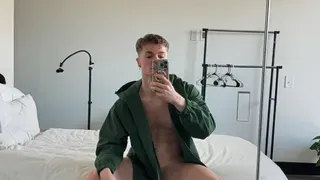June 30, 2013
Bridging the Gay / African American Divide
Kilian Melloy READ TIME: 4 MIN.
For Ramekon O'Arwisters, a San Francisco-based, gay African American artist, racial and gender politics are realities, not abstract constructs, and they are never far from his mind or his work, where he merges his identities. In "Sugar in Our Blood: The Spirit of Black and Queer Identity in the Art of Ramekon O'Arwisters," a small autobiographical exhibition now at the African American Art & Culture Complex, he examines the stereotyping of LBGT and African American communities through colorful mixed-media installations that draw on the folk-art tradition of rag-rug tapestries. Incorporating intimate apparel, nightgowns, shirts, church hats, family photographs, aprons, and other cultural icons, the rugs are woven by the multi-ethnic, sexually diverse modern equivalent of a quilting bee. According to the artist, the finished pieces reflect sexuality, domesticity and spirituality, while conveying society's stubborn attachment to sexual and racial prejudices.
O'Arwisters, who's also a curator at the SFO Museum, has experimented with a variety of media, including glass, synthetic polymer, and paint, deconstructing the charged subtext of consumer goods that he describes as "stand-ins for race, gender, sexuality and prejudice." But recently, he has taken a different approach; he has organized weekly Crochet Jams, get-togethers that became an integral component of his residency at the de Young last year, where more than 100 people participated, and contributed to the objects displayed in this show. It's the collaborative process that intrigues O'Arwisters rather than the final product. "I want these projects to be a springboard for the spirit of black and queer identity," he says. "If we can do this art together, what else can we do in other areas of our lives?"
His passion for inclusiveness is all the more remarkable when one considers the road he has traveled. A young boy who loved to sew and draw in the family kitchen, he grew up gay and African American during the 1960s in Kernersville, a North Carolina mill town where Winston-Salem and Greensboro converge. He graduated from Duke University in 1986 with a Masters of Divinity, and in 1991, landed in San Francisco, where he shares a studio/condo with his partner, a fellow artist. The following are excerpts from a conversation we had at the AAACC gallery.
Sura Wood: After spending your childhood and young adult life in the South, how did it feel to move to San Francisco?
Ramekon O'Arwisters: When I first got here, I liked being able to define my sexuality and my identity on my own terms. That would not have been possible in North Carolina when I was coming of age. I knew I had to leave.
The Trinity (2011-13) (fabric, ceramic, glass, metal), a mixed-media installation by Ramekon O'Arwisters. Photo: Courtesy the artist and the AAACC
When did you know you wanted to an artist?
When I knew I didn't want to be a United Methodist minister.
What prompted this new direction in your work?
I had a realization that I had been spending a lot of time doing social commentary but I wasn't engaging people to think differently. I was just making statements. So I moved from social commentary to social practice. Instead of making artwork that describes the socio-political conditions of our time, I created a community around me that I want to see. I wanted to bring together the black and queer communities because when I grew up, there was a barrier between the black church and LGBT people, which still exists. I've acknowledged that divide in myself and no longer spend my energy keeping those two identities separate. I want to be the bridge that unites. That's my motto.
What was it like for you growing up in a Southern town? Did your parents know you were gay?
My mother knew before I did, and I knew by the time I was 5 or 6. My father never mistreated me for being gay. He knew who I was at a very early age. He was a strict authoritarian, but he was also very gentle in a time - the 1960s - when, as a father trying to raise his young gay son into a man, he could have been harsh and cruel. He was very special.
What's the origin of your unusual name?
Several years ago, I decided it was time to take myself out of a history that has ties to slavery. I wanted a name that I chose, that wasn't placed on me like a piece of property, and that sounded great as it rolled off my lips. I wanted to give back the type of care and appreciation my father gave to me by taking his first name, which is Arwisters, as my last. I added the "O" which means "child of." I originally chose Ramekin as my first name until I realized it's the name of a serving dish. So I changed it to Ramekon.
Where did the show's title come from?
When my father would go downtown, he would sometimes point and say, "That man over there, he has sugar in his shoes," which was a euphemism for "He's gay," or, "He's sweet." I changed the phrase to Sugar in our Blood because whatever we are - gay, black, straight, Latino - we're all more alike than otherwise. I want to move away from stereotypes and labels that prevent us from seeing ourselves as united. We're much stronger and more powerful as a group.
Sugar in Our Blood runs through Sept. 12
Kilian Melloy serves as EDGE Media Network's Associate Arts Editor and Staff Contributor. His professional memberships include the National Lesbian & Gay Journalists Association, the Boston Online Film Critics Association, The Gay and Lesbian Entertainment Critics Association, and the Boston Theater Critics Association's Elliot Norton Awards Committee.
